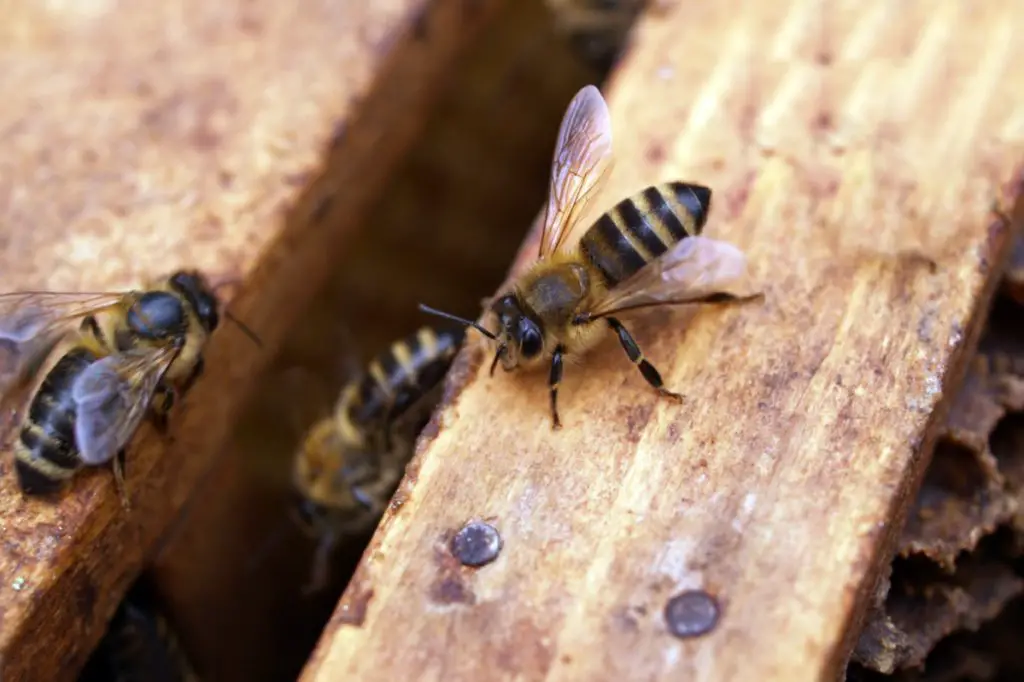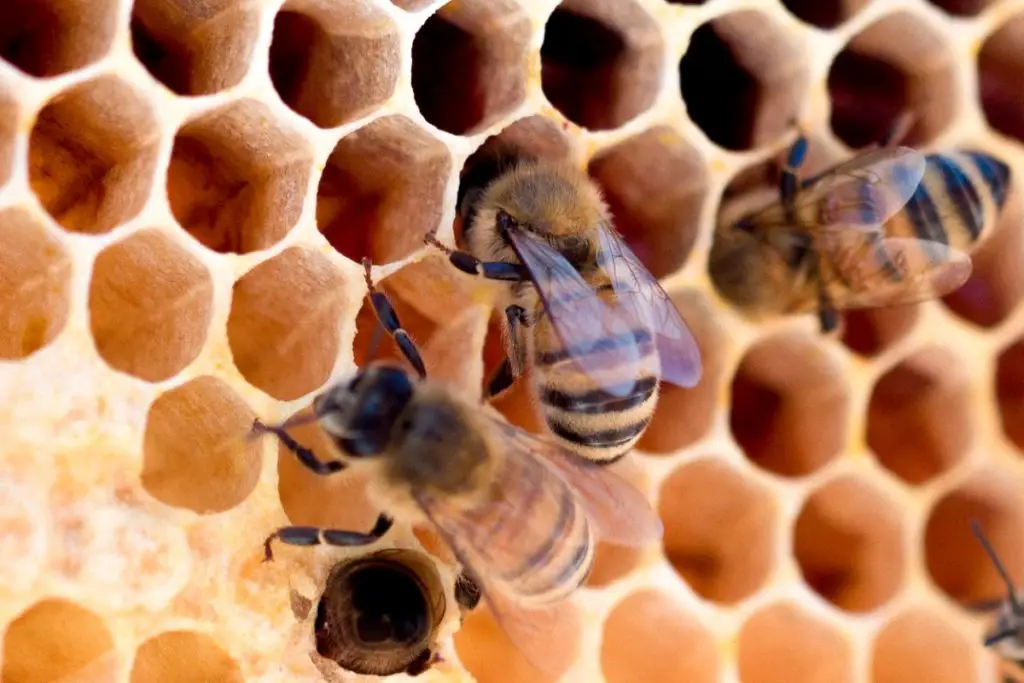Last updated on January 19th, 2024 at 02:16 pm
The classic honeycomb appearance of a beehive is an iconic image. From my very early years, I can remember the hexagonal patterns adorning my favourite storybooks.
I always imagined beehives to be the equivalent of pubs for us, where bees go and guzzle honey together and reminisce after a hard day of collecting nectar and pollen.
As nice an idea as that may be, the reality is hives are so much more. The epicentre of reproduction and food production, this structure plays a key role in honey bees’ success so far.
So let’s buzz into one of nature’s most complex structures and answer the question ‘How Do Bees Make Hives?’.
What Does A Hive Look Like?
A simple question with a not-so-simple answer. The word hive is often used as a ‘cover all’ term when this could not be further from the truth.
A hive is a man-made structure. In simple terms, it’s a wooden box that provides shelter for the colony to build a home and raise their young.
Nests are colonies of wild honey bees that take up residence normally in a crevice between rocks or a hollowed tree.

Managed Hives
Human beings have kept bees for their honey as far back as the Egyptians. This calorie-rich golden syrup would have been a gold mine for early man.
Egyptians depicted storing honey in vases as far back as 650 BC so they must have spent time studying how and why bees build hives and how to replicate them.
Today beekeeping is on the up and the amount of managed colonies is rising each year and contributing to the growing population of honeybees in the United Kingdom.
A modern frame hive is a wooden, enclosed structure designed to house bees and encourage honeycomb and honey production.
It has several removable frames that the bees store their honey in, making collection easy for the beekeeper.
How do bees make their hives?
Whether a managed hive or a nest of wild honey bees the task is the same. The worker bees are put to work creating the structure of the hive from the top down.
The interior structure is made primarily of honeycomb but there are some other interesting elements within the construction process.
Honeybees will collect a substance called propolis from tree buds.
This substance has many uses but the most important is as a form of sealant for honeycomb.
Any gaps or crevices within the structure will be filled with propolis to make sure it’s capable of storing honey or young.
Worker bees are equipped with a handy tool when it comes to honeycomb production.
At about 10 days old a female worker bee will develop glands in her abdomen. These glands allow the female worker bee to convert the sugar she collects from nectar and pollen into wax.
You can see this in action when small flakes of wax begin to appear on the worker bee’s abdomen.

The Perfect Place For A Nest
Honey bees are fussy about the location of their new home, and rightly so.
When selecting a location for a nest, the swarm will send out scout bees to assess potential locations.
Returning scout bees will perform a ‘waggle dance’. The vigour of the dance tells other bees whether it is worth checking out for themselves.
When assessing the nest sites the scout bees are looking for a very particular set if characteristics.
- Protect the colony from the elements and severe weather.
- A large selection of flora rich in pollen and nectar nearby allows the bees to forage, collect stores and create honey.
- Out of direct sunlight so the honeycomb doesn’t melt on hot summer days.
- A discreet entry with no other points of entry to help with defence.
Once all of these criteria have been met the scout bee will return to the swarm and relay her findings with her dance moves.
*Help the bees in your garden – Check out our recommended wildflower mix to encourage more bees and pollinators to your garden or wild area.
What are bee hives made of?
Before honey bee workers start construction they collect the flakes of wax adorning their abdomen.
Then they proceed to chew it for approximately 30 minutes. This softens the wax and makes it easier to shape and mould.
When building the hive, workers bees will use a layer of propolis at the entrance to their home.
This acts as a disinfectant for the bees’ legs, not unlike the swimming pool foot baths of old.
Propolis can even be used to embalm intruders and stop the insect’s corpse from decomposing (posing a major health risk to the entire colony).
Ideally, the workers would drag the unfortunate intruder out of the hive but in cases where it’s too heavy or large, propolis is a great alternative.
How do bees build hives?
The hexagonal design of the honeycomb is no mistake and when you look into the reasons why, the honeybee genius becomes apparent.
Imagine stacking hundreds of cylinders on top of each other, now do the same with the hexagonal structure of honeycomb. When you use a cylindrical shape you will always have gaps, but with the honeycomb hexagon, every single bit of viable space is used.
This is a real testament to the true intelligence of bees and their truly amazing construction skills.
During construction, worker bees will use their abdomen as a measure of the honeycomb cell size.
Ensuring the receptacle will be ample for the honey and young that will soon be arriving.

Once The Hive Or Nest Is Complete
After the honeycomb is complete it is ready to be filled with eggs and honey. The queen honeybee will proceed to start producing young to deposit into the newly created cells.
As honeybees harvest nectar through summer and spring they will start to develop a surplus. This excess honey is stored within the cells of the honeycomb for the coming winter.
The excess honey is capped in a wax layer to ensure its prolonged life.
So to answer the question ‘How Do Bees Make Hives?’. The answer is a lot of teamwork and some truly ingenious methods and tools.




